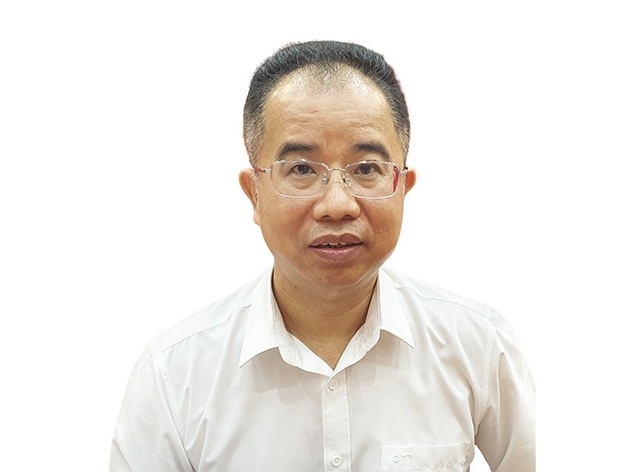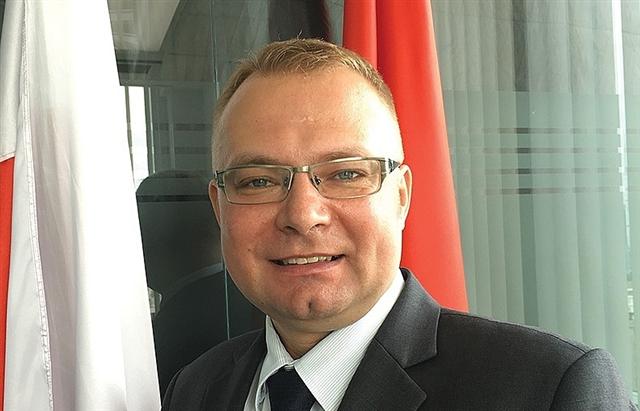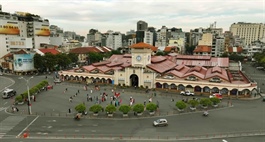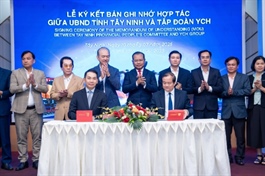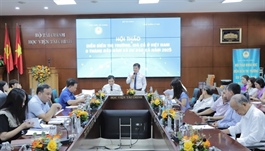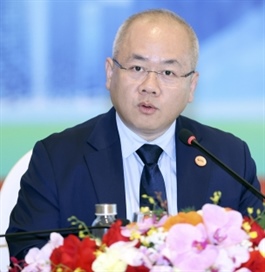Tra Vinh, now part of Vinh Long, gains tourism momentum as fresh driver
Tra Vinh, now part of Vinh Long, gains tourism momentum as fresh driver
Tra Vinh province, which was incorporated with Ben Tre into Vinh Long province this month, is revitalising its tourism sector, leveraging cultural heritage and community-based tourism to become a strategic economic pillar by 2030.

Several key sites in the locality have developed community and experiential tourism models |
Recognising tourism as an integrated service economy rich in cultural and humanistic values and a key driver for national development, the tourism industry of the Tra Vinh area is undergoing a steady transformation, contributing positively to the local economy.
According to the former Tra Vinh Department of Culture, Sports and Tourism (DCST), the first half of 2025 saw encouraging progress in it tourism industry. Total tourism revenue reached $54.05 million, equal to 51 per cent of the full-year plan.
The total number of tourist arrivals surpassed 2.32 million, equal to 54 per cent of the full-year target, of whom international visitors approximated 84,500, reaching 80 per cent of the full-year target.
Local tourist accommodations hosted more than 664,600 guests, with about 77,600 international arrivals, representing 55 and 85 per cent of full-year targets, respectively. Average room occupancy climbed to 69 per cent, up 3 per cent on-year. This was deemed a solid achievement given the broader economic challenges that have partially impacted local tourism.
Currently, the locality boasts 138 tourism accommodation establishments, including three guesthouses, 23 hotels, 10 homestays, and over 100 standard facilities.
In addition, it is home to more than 30 restaurants that offer regional specialities, souvenirs, food services, and entertainment; two international travel agencies; and 14 domestic travel companies.
Efforts to promote tourism, streamline administrative procedures, support businesses, and embrace digital transformation are regularly prioritised by the locality. These have laid the groundwork for the tourism industry’s steady growth, resulting in distinctive offerings that entice more visitors.
The former Tra Vinh is home to seven prominent tourism sites recognised by the Mekong Delta Tourism Association: the Ho Chi Minh Temple historical site, Con Chim community tourism site, Huynh Kha ecotourism site, Ao Ba Om cultural and tourism area, Con Ho community ecotourism site, Khmer ethnic culture museum, and the memorial site of national heroine Nguyen Thi Ut.
It also features over 140 Khmer Theravada Buddhist pagodas, distinguished by their unique architecture and rich cultural heritage.
Numerous traditional festivals of ethnic minority communities are celebrated throughout the year. Additionally, it boasts two national treasures, eight intangible cultural heritage titles, 16 national relics, and 44 provincial-level relics.
At the ASEAN Tourism Forum 2025 held in Malaysia, the Con Chim site received the ASEAN Community-Based Tourism Award, spotlighting Tra Vinh’s success in community-based tourism.
This international recognition provides an excellent opportunity to introduce more locally distinct destinations to domestic and international travellers.
The Con Chim site, surrounded by the Co Chien River, dense nipa palm forests, and lush mangroves, spans 62 hectares and is home to over 200 residents. It is one of several key sites to have developed community and experiential tourism models, combining ecological protection with cultural preservation.
The Khmer Cultural and Tourism Village was also launched in the area, closely linked to the scenic Ao Ba Om area and the Bo Luy-Lo Gach pagoda archaeological site.
Other notable destinations include Con Ho islet in Cang Long area and Tan Quy islet in Cau Ke area, known for their preserved southern rural culture, clean agriculture, fresh air, and year-round tropical fruits.
Local management is focusing resources on developing infrastructure to better connect local tourism sites and integrate with other destinations across the Mekong Delta. It is also investing in coastal corridor roads to promote the local marine economy in tandem with tourism development, while forming land reserves to attract strategic investors to build high-end resorts in the green tourism city of Tra Vinh and the coastal tourism town of Duyen Hai.
According to Duong Hoang Sum, director of the DSCT, this year the locality aims to welcome 4.2 million visitors, including nearly 80,000 international tourists, and record 1.2 million overnight stays. The tourism industry aims to generate approximately $107.2 million in total revenue, showing a 5 per cent jump on-year.
“By 2030, Tra Vinh, now as part of Vinh Long, seeks to establish tourism as a key economic sector, contributing to propelling socioeconomic development, upgrading tourism infrastructure, and offering high-quality, culturally rich tourism products with a strong national identity,” Sum said. “These efforts will also ensure our capacity to host regional and national-scale cultural, sports, and tourism events.”
| Tra Vinh efficient in propelling public investment Tra Vinh takes on high-tech agriculture Tra Vinh adds to its regional rank scores Tra Vinh gains momentum as regional economic bright spot Tra Vinh province makes major gains in PCI rankings |
- 13:23 14/07/2025


